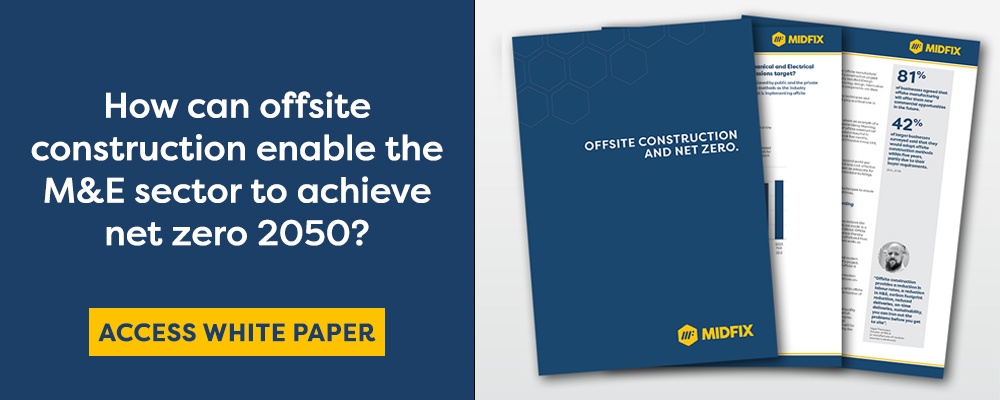For the construction industry, there has been a drive towards a more sustainable, efficient, and safer future. The increasingly litigious nature of the industry has rightly led to practices improving and certain methods becoming more prominent.
One area of growth within the M&E sector is the increasing use of secondary modular steelwork.
What is secondary modular steelwork?
Modular steelwork is quite simply sections of steel that can be assembled to form a module/structure.
Why is the M&E industry turning towards secondary modular steelwork?
Secondary modular steelwork is becoming ever more popular for M&E contractors who are looking to complete a project on budget, on-time, safely and to a high standard whilst minimizing waste.
When compared to traditional welded steel, modular steelwork meets these aims. Modular steelwork has the following benefits:
- Reduced installation times as it is simple to assemble and is lightweight.
- Reduced carbon footprint as it can be shipped from the UK
- No requirement for hot works leads to a reduction in costs and risk to health and safety.
- Easily adjusted on-site without the need for hot works
- It can be used to form completely integrated plant room skids.
- Connections and adaptors to fit onto primary steel structures.
- Easily support AHU frames and chillers
- Connect to any surface – concrete, steel, non-penetrative roof supports.
- The full exterior surface can be utilised for supporting connections.
- Comes with a Hot-dip galvanised finished making it ideal for outdoor assemblies
Modular steelwork has benefited from the growth of offsite construction. With the need to increase efficiencies and employ sustainable practices, both the government and the industry have promoted off-site construction (Construction Playbook 2020). Off-site construction fits in with the governments overall aims for the construction industry:
- Governments desire to invest in a country’s infrastructure
- The need to create sustainable working practices
- The demand for the reduction in carbon footprint to achieve the net zero carbon emissions target of 2050
What is Off-site construction?
Off-site construction is simply building a structure away from its intended location. (Design Buildings, 2021).
What are the benefits of off-site construction?
- Reduction in health and safety accidents as the risk is taken away from the site = cost saving
- Room for design error due to the adaptability of a modular steelwork system = cost saving
- Reducing labour rates – there are no hot-works, semi-skilled labourer can assemble the modular frame = cost saving
- Decreased onsite deliveries = cost saving
- Sustainable due to less waste = cost saving
- Reduce carbon footprint – helping to meet the net-zero 2050 target = sustainability
- Technical data such as load and stress calculations can be traced back = traceability
- Quicker installation time = cost saving
How can MIDFIX help?
MIDFIX are the UK’s largest stockist of Framo manufactured by SIKLA. Framo is a non-welded steelwork support system for constructing supports, frames and load-bearing structures. Framo is used for supporting loads that are beyond the capabilities of strut type channels and would traditionally require off-site fabricated steelwork and heavy steel sections.
What are the main benefits of Framo?
✔️ Pre-engineered configurations
✔️ High torsional strength
✔️ 50% lighter than traditional steel
✔️ Reduced carbon footprint
✔️ Adjustable and adaptable on-site
✔️ No on-site hot works required
✔️ Corrosion protected
Secondary steelwork modularisation (the use of Framo) also promotes the latest best practices within construction such as modern methods of construction and DfMA.
MIDFIX are the only supplier of Framo in Europe that has the design and engineering capability to run comprehensive load calculations and structural analysis.
Meet 'The Rocket' - showcasing the strength of secondary modular steelwork.


